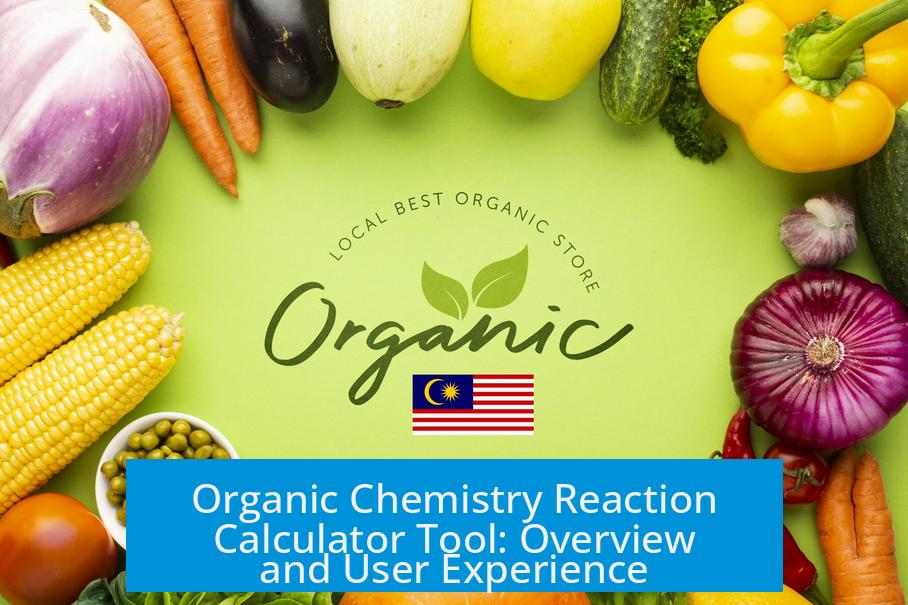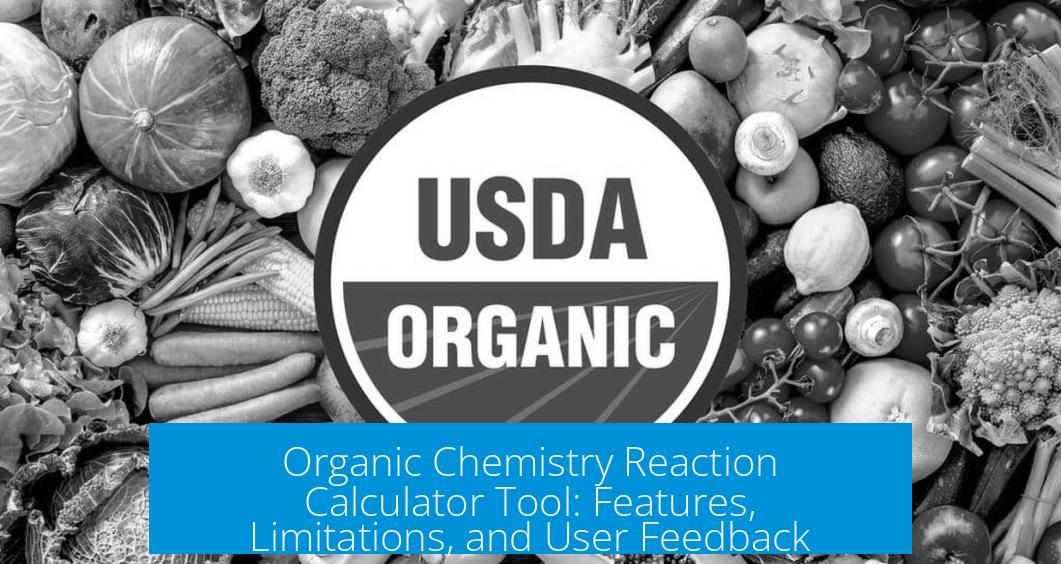Organic Chemistry Reaction Calculator Tool: Overview and User Experience

The Organic Chemistry Reaction Calculator Tool serves as an interactive resource to predict and verify outcomes of organic reactions. It simplifies tasks like homework checking, reaction mechanism studies, and reagent selection. Users utilize it to perform common organic transformations, especially those involving alkenes, nucleophilic substitutions, and hydride shifts.
Capabilities and Achievements
The tool handles a variety of reactions successfully. Key examples include:
- Alkene bromination with HBr, including complex hydride shift mechanisms.
- SN2 substitution reactions with typical nucleophiles like NaCN.
- Simple and well-understood transformations commonly encountered in undergraduate curricula.
Users report smooth operation in many scenarios, making organic reaction prediction more accessible. It acts as both a learning aid and problem-solving partner. Comments affirm its practical utility in homework verification and exam preparation.
Observed Limitations and Bugs
Despite its strengths, the tool exhibits weaknesses in some reaction scenarios. These include:
- Failure to correctly simulate addition of chlorine (Cl2) across double bonds in certain solvents like CCl4.
- Inability to process reactions involving the Darzon process with reagents like thionyl chloride (SOCl2).
- Occasional incorrect results or inability to predict expected products for some nucleophile and substrate combinations. For instance, a SN2 reaction with 1-bromopropane and KCN was incorrectly negated, while NaCN worked.
- Inconsistent or differing outcomes compared to experimental expectations in isolated cases.
These issues suggest the underlying reaction database or algorithm requires expanded coverage and improved mechanistic pathways for less straightforward or more specialized transformations.
User-Requested Features and Enhancements
Feedback emphasizes expanding the tool’s reverse-query capability. Current functionality focuses primarily on predicting products from given reactants and reagents.
- Users desire the ability to input a product and reactant pair to discover which reagents can realize the transformation.
- This addition would improve retrosynthetic analysis and planning organic syntheses.
- Extensions to allow input of two molecular structures to suggest possible reagents and reaction conditions.
The requests indicate users seek a more interactive and hypothesis-driven tool, fostering deeper exploration of reaction design.
Impact on Learning and Community Reception
Community responses underscore the tool’s positive educational impact. Highlights include:
- Assists students in mastering organic chemistry by providing instant feedback on reaction predictions.
- Reduces frustration during study and homework exercises by offering a reliable reference.
- Encourages interest in computational chemistry applications within chemical education.
- Users internationally report relief and gratitude for having found this resource during exam preparation.
- Enthusiastic programmers with chemistry backgrounds acknowledge the clever integration of software and chemical knowledge.
Its role as a supplemental aid in organic chemistry courses is well recognized.
Miscellaneous Observations and Community Queries
- Users have pointed out minor spelling errors on the website, indicating attention to interface quality.
- Questions arise about the complexity of molecules supported by the tool, reflecting curiosity about computational limits.
- Requests for access shares and possible donations suggest strong community engagement and willingness to support further development.
- Some users inquire about ongoing updates and future plans for the platform.
Summary of Key Points
- The Organic Chemistry Reaction Calculator Tool effectively predicts numerous common organic reactions, aiding student learning.
- It successfully handles alkene bromination with hydride shifts and typical SN2 reactions.
- The tool currently struggles with certain complex reactions such as Cl2 additions and the Darzon process with SOCl2.
- Users request functionality for predicting reagents based on given reactant-product pairs.
- Broad community appreciation highlights its value as a homework helper and learning companion.
- Continuous improvement, bug fixes, and feature expansion would enhance accuracy and usability.





Leave a Comment